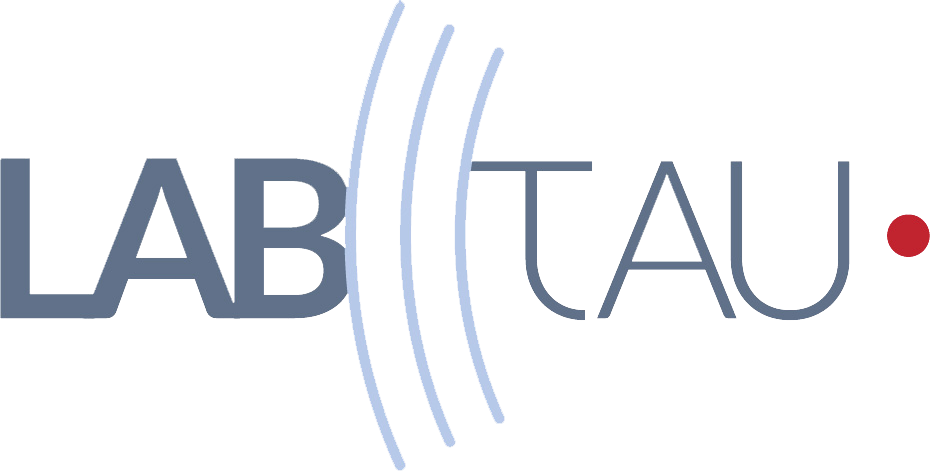Thesis by REGNAULT Gabriel
Micrometric bubble pair behavior under acoustic excitation
Defended on 22 november 2021
Acoustic bubbles are known to allow a contactless and localized action on a surrounding body, as for example in ultrasound therapies or for engineering applications. These bubbles are often encountered as more or less dense groups, called bubble clouds. The behavior of such clouds are driven by acoustic and fluid interactions. The work presented in this dissertation aims at studying the streaming flow induced by such oscillating bubbles as well as the interactions undergone by a bubble couple. Under specific conditions on the size of the bubbles and the acoustic pressure amplitude they are submitted to, a bubble interface can demonstrate shape oscillations. Such deformations give rise to a slow mean flow around the bubble: the so-called microstreaming. A recent theoretical approach is used to understand the diversity of microstreaming patterns that are observed experimentally around bubbles trapped in a resonant water tank. It is shown that the cross-like patterns (large scale action) are linked to self interaction of the main triggered mode and that lobe-like patterns (local action) are associated to the cross-interaction between the breathing mode and the parametrically excited one. The study of a large variety of bubble couples is achieved through the use of a bi-frequency acoustic levitation chamber. Bubbles are maintained at controlled distances in an infinite fluid. Such a technique allows the quantification of the secondary radiation force acting on each bubble, their spherical or nonspherical oscillations, the acoustic coupling at the ultrasonic time scale and the fluid flow they generate. It is shown that the triggering of nonspherical oscillations induce an additional hydrodynamic force which modifies the bubble pair equilibrium. The inversion of the secondary radiation force is evidenced when the bubbles sufficiently attract and migrate to a specific equilibrium location in the trapping field. At this location, the presence of shape modes has been shown to be responsible for bouncing between the bubbles. The acoustic coupling is also studied. Two regimes are evidenced: either the bubbles are both smaller than the resonance size for the chosen excitation frequency and hence the coupling is constructive or they are greater than this resonance size and hence the coupling is destructive. While nonspherical oscillations do not seem to have a huge impact on this coupling, they are at the origin of a large scale hydrodynamic interaction. In this case, the shear stress induced in the bulk is quantified, and appears greater than the threshold required to induce biological effects on cell membranes.
Soutenue le 22 November 2021
Defended on 22 november 2021
Acoustic bubbles are known to allow a contactless and localized action on a surrounding body, as for example in ultrasound therapies or for engineering applications. These bubbles are often encountered as more or less dense groups, called bubble clouds. The behavior of such clouds are driven by acoustic and fluid interactions. The work presented in this dissertation aims at studying the streaming flow induced by such oscillating bubbles as well as the interactions undergone by a bubble couple. Under specific conditions on the size of the bubbles and the acoustic pressure amplitude they are submitted to, a bubble interface can demonstrate shape oscillations. Such deformations give rise to a slow mean flow around the bubble: the so-called microstreaming. A recent theoretical approach is used to understand the diversity of microstreaming patterns that are observed experimentally around bubbles trapped in a resonant water tank. It is shown that the cross-like patterns (large scale action) are linked to self interaction of the main triggered mode and that lobe-like patterns (local action) are associated to the cross-interaction between the breathing mode and the parametrically excited one. The study of a large variety of bubble couples is achieved through the use of a bi-frequency acoustic levitation chamber. Bubbles are maintained at controlled distances in an infinite fluid. Such a technique allows the quantification of the secondary radiation force acting on each bubble, their spherical or nonspherical oscillations, the acoustic coupling at the ultrasonic time scale and the fluid flow they generate. It is shown that the triggering of nonspherical oscillations induce an additional hydrodynamic force which modifies the bubble pair equilibrium. The inversion of the secondary radiation force is evidenced when the bubbles sufficiently attract and migrate to a specific equilibrium location in the trapping field. At this location, the presence of shape modes has been shown to be responsible for bouncing between the bubbles. The acoustic coupling is also studied. Two regimes are evidenced: either the bubbles are both smaller than the resonance size for the chosen excitation frequency and hence the coupling is constructive or they are greater than this resonance size and hence the coupling is destructive. While nonspherical oscillations do not seem to have a huge impact on this coupling, they are at the origin of a large scale hydrodynamic interaction. In this case, the shear stress induced in the bulk is quantified, and appears greater than the threshold required to induce biological effects on cell membranes.
Soutenue le 22 November 2021




